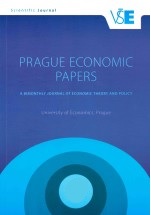SME’s Credit Conditions during the Financial Crisis in Europe
SME’s Credit Conditions during the Financial Crisis in Europe
Author(s): Yaseen GhulamSubject(s): Social Sciences, Economy
Published by: Vysoká škola ekonomická v Praze
Keywords: credit; financial crisis; supply and demand; small and medium enterprises
Summary/Abstract: This study examines the role of firm-specific, macroeconomic, banking and financial environment factors in determining whether they were able to access external finance during the global financial crisis. Heckman’s selection approach is used to model the demand and supply of credit in the euro area during and after the financial crisis period. We conclude that since 2011, when the rejection probabilities for external credit applications peaked, the chances of obtaining credit have improved. However, young and small firms are still more likely to have their credit applications rejected. A decrease in government support such as guarantees increases the probability of rejection, as does a reduction in firms’ own capital and a worsening credit history. Among the bankspecific factors, an increase in banks’ equity capitalization reduces the rejection probability, while an increase in the cost of borrowed funds and a decrease in the competition levels raise the rejection probability. The legal structure to deal with insolvency disputes and the development of the credit information market have a significant bearing on credit availability, as we find that an increase in the time to resolve insolvencies and a reduction in adverse selection problems by credit information sharing increase the credit rejection probabilities.
Journal: Prague Economic Papers
- Issue Year: 28/2019
- Issue No: 1
- Page Range: 105-125
- Page Count: 21
- Language: English

